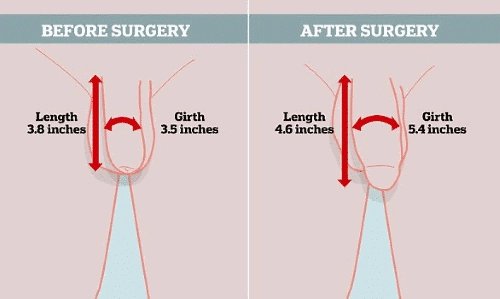The Early Years: Childhood and Pubert
During the early stages of life, particularly in childhood and puberty, the growth and development of the penis begin. While not noticeable during infancy or early childhood, changes become more evident during puberty. Puberty, a time of significant hormonal changes within the body, is the main catalyst for penile growth and development.

Puberty typically begins between the ages of 9 and 14, signaling the onset of adolescence. At this stage, the testes enlarge, pubic hair starts to develop, and the first signs of penile growth become apparent. Although penile growth occurs gradually, it picks up pace during this phase. Most males experience noticeable growth in both length and girth during their teenage years.
The Role of Hormones in Growt
The primary hormones responsible for penile growth during puberty are testosterone and dihydrotestosterone (DHT). As these hormones increase, they stimulate the growth plates in the long bones, promoting overall growth. This process also affects the penis, causing it to continue growing in size and length.
The Growth Plate Closur
Once puberty is complete, the growth plates in the body, including those in the penis, start to close. Growth plates are areas of developing cartilage located at the ends of bones that allow for longitudinal growth. In most cases, the growth plates close between the ages of 16 and 21, marking the end of penile growth for most males.
Although this is the general timeline, it's important to remember that every individual is unique, and growth rates may vary. Some men may notice small incremental growth into their early twenties, while others may reach their full penile size earlier in their late teens.
Beyond Puberty: Understanding Adult Penile Siz
Once the growth plates have closed, the penis reaches its final size, both in length and girth. While the average adult penis size is approximately 5.16 inches (13.12 cm) in length when erect, it's crucial to remember that penile size varies among individuals.
Conclusion:
Understanding when your penis stops growing is a common concern among males. Typically, penile growth occurs during childhood and puberty, driven by hormonal changes. The growth plates in the penis and other bones close between the ages of 16 and 21, indicating the end of growth. However, individual growth rates may vary, and some men may notice small incremental growth into their early twenties. Remember, what truly matters is embracing and accepting your body, as penile size does not determine sexual prowess or pleasure.
Related FAQs about when does your penis stop growing
1. When does penile growth typically begin?
Penile growth usually begins during puberty, which typically occurs between the ages of 9 and 14.
2. What hormones are responsible for penile growth?
The primary hormones responsible for penile growth are testosterone and dihydrotestosterone (DHT).
3. When do the growth plates in the penis close?
The growth plates in the penis typically close between the ages of 16 and 21, marking the end of penile growth for most males.
4. Can penile growth continue beyond puberty?
While penile growth generally completes by the end of puberty, some men may experience small incremental growth into their early twenties.
5. Does penile size determine sexual prowess or pleasure?
No, penile size does not determine sexual prowess or pleasure. Sexual satisfaction depends on various factors such as emotional connection, communication, and technique.
Glossary about when does your penis stop growing
1. Puberty: Puberty is the stage of development when children transition into adolescence. It is characterized by significant hormonal changes, physical growth, and sexual maturation.
2. Testosterone: Testosterone is the primary male sex hormone responsible for the development of male reproductive tissues, including the penis, testes, and prostate. It also plays a crucial role in muscle and bone development.
3. Dihydrotestosterone (DHT): Dihydrotestosterone (DHT) is a hormone derived from testosterone. It is responsible for the development and growth of male sex organs, including the penis and prostate. DHT is more potent than testosterone itself.
4. Growth Plates: Growth plates, also known as epiphyseal plates, are areas of developing cartilage located at the ends of long bones in children and adolescents. They permit the longitudinal growth of bones.
5. Penile Size: Penile size refers to the dimensions of the penis in terms of length and girth. It is a physical characteristic that varies among individuals.
6. Erect: Erect refers to the penis being in a state of full and rigid enlargement due to increased blood flow. It is the typical state of the penis during sexual arousal.
7. Individual Growth Rates: Individual growth rates refer to the speed or pace at which an individual's body grows and develops. It can vary among different people due to genetics, hormonal variations, and environmental factors.
8. Adult: In the context of penile growth, adult refers to the stage of life after the completion of puberty and the attainment of physical and sexual maturity.
9. Sexual Prowess: Sexual prowess refers to one's sexual skill, ability, or expertise. It encompasses various aspects of sexual performance, satisfaction, and confidence.
10. Penile Pleasure: Penile pleasure refers to the satisfaction or enjoyment experienced during sexual stimulation or intercourse specifically related to the sensations and responses of the penis.
